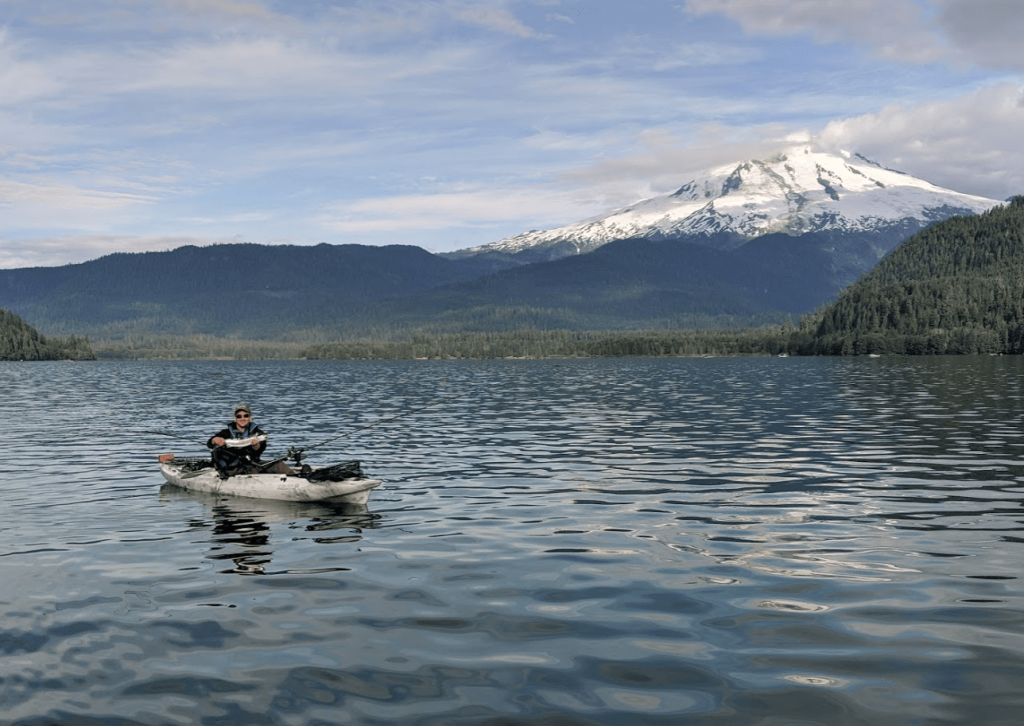
No Skagit River Sport Sockeye Fishery, WDFW Announces; Conservation Concerns Voiced
Editor’s note, 10:16 a.m., June 11, 2020: A June 5, 2020, WDFW press release on which this story is partially based incorrectly stated the upper end of the Skagit River sockeye forecast as “as many as 13,242.” That is actually the median point of the forecast; the upper end is 22,107. The story has been tweaked to reflect that.
With possibly as few as 8,056 sockeye returning to the Skagit this season, state managers say the river won’t open to recreational fishing for the tasty salmon as scheduled.
And with the low forecast – the median is 13,242 – the run back to Baker Lake could potentially even come in underneath broodstock goals, warned WDFW in a press release out this morning.

“Given this forecast, largely as a result of poor ocean conditions, we’re taking these steps to ensure we’re meeting our commitments to conservation,” said Brett Barkdull, the agency’s district fish biologist.
That resonated with sockeye sportfishing advocate Frank Urabeck.
“Sport anglers who love to fish sockeye agree that conservation is the top priority for the Baker River sockeye run that has been in a steep decline since 2015 when 53,000 sockeye returned to the Skagit River,” he said this afternoon.
Urabeck pointed out that several forecasts in recent years have overpredicted how many fish would eventually return to Baker, and said that many are worried that the run could be headed the way of Lake Washington’s stock.
“Consequently sports anglers were prepared to give up a Skagit River sockeye fishery this season in order to have sufficient broodstock and natural spawning escapement to keep the run alive,” Urabeck said.
There are clear differences in the challenges that Lake Washington and Baker Lake sockeye face, but a recent paper suggested that red salmon like those stocks at the southern end of the species’ range were 15 percent less productive between 2005 and 2015 due to warm ocean conditions they entered and competition with the 82 million pink salmon pumped out annually by hatcheries in Alaska and eastern Asia.
While Baker Lake boaters account for the lion’s share of the overall sport harvest in the system, the Skagit River – which was slated to open June 16-July 15 from the Highway 536 bridge in Mount Vernon up to Gilligan Creek – offers shorebound plunkers a chance to score fillets too.
Data for the 2015-17 seasons show that 800, 181 and 280 were retained on the river, 10,800, 8,971 and 4,798 on the lake.
“Assuming this closure helps us to meet our sockeye Skagit River management goals, we’ll be prioritizing providing a future harvest opportunity at Baker Lake – something we heard was important to anglers as part of this year’s salmon season-setting process,” said Barkdull.
That could be a tall order for 2020: This year’s broodstock goal is 10,000 sockeye, making for a tight fit given scheduled tribal fisheries.
Per the WDFW-NWIFC list of agreed-to fisheries, or LOAF, Swinomish fishermen are set to net the river for 2.3 days the weeks of June 28 and July 5, as the run peaks. Another tribe has a placeholder for their share.
Urabeck said that attempts were made to encourage tribal fishery managers to delay their season until mid-July, when more data on the run would be available via the collection trap on the Baker River.
Sockeye are trucked from there up to Baker Lake, the uppermost of the two reservoirs on the system.
The drawback of a delayed start for the Swinomish is that most of the sockeye would be past their fishing grounds already.



The inclusion of two run forecasts in WDFW’s press release is notable. Generally there is only one – the one agreed to by the agency and tribes at the start of the North of Falcon salmon-season-setting process.
The larger of the two figures – 13,242 – was the official prediction.
It may be somewhat emblematic of the increasingly contentious nature of managing the fishery in recent years.
This year’s run is expected to be the lowest of the past five, and as forecasts have continued to fall through, it has resulted in a catch imbalance between sport and tribal fishermen in favor of the latter fleet because fewer fish are thus available to the former.
Unexpected bumper runs could level that out quickly, but in the meanwhile Urabeck indicates he’ll be watching things very closely in the coming weeks.

B4 Adventure Slackers Eagle 90′ Zipline Kit
Last year’s run came in below the lower end of the forecast range – which in 2020 is the 8,056 figure – and the North Pacific Gyre Oscillation index for this year’s fish at sea was low, adding more uncertainty to the prediction.
